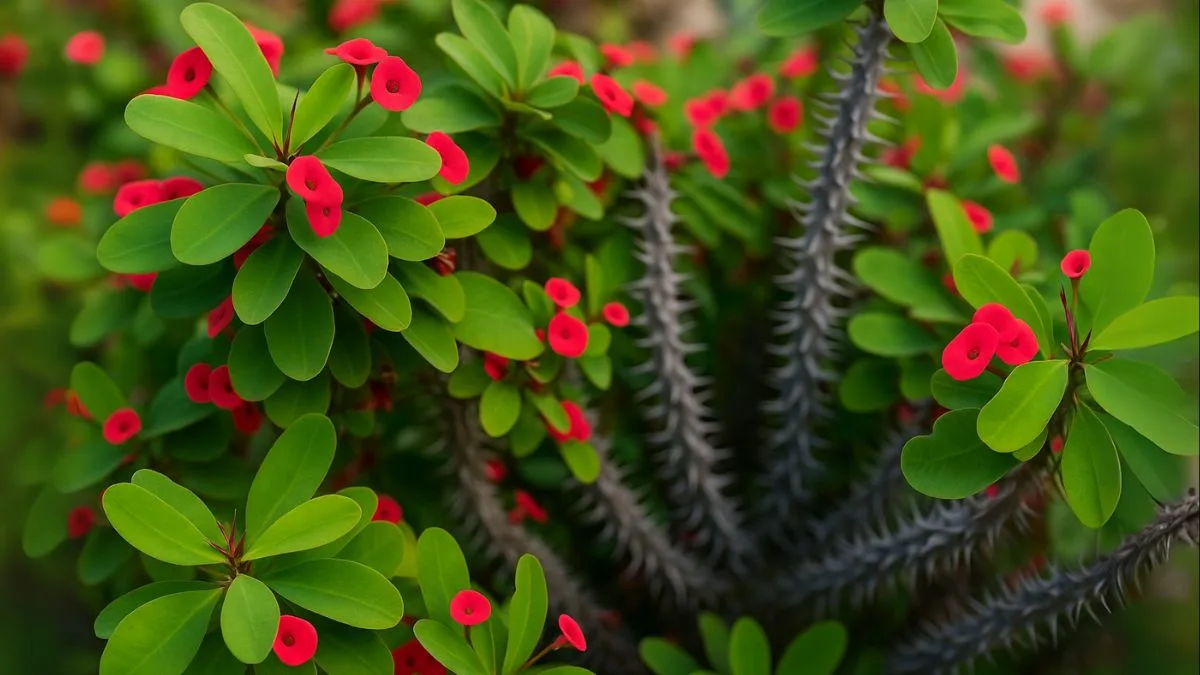The Christ Thorn, often referred to as the crown of thorns plant, is a beloved houseplant with both ornamental and symbolic value. Legend has it that this was the very plant used to create the crown placed on Christ during the crucifixion, which explains why it holds such strong cultural and religious meaning across the world.
But beyond its symbolism, this succulent is also an easy-to-grow plant that rewards gardeners with clusters of bright flowers and a resilience that makes it suitable for beginners and experts alike.
If you’re planning to add one to your collection, here’s everything you should know before you grow it.
The Symbolic Significance of Christ Thorn

The Christ Thorn holds symbolic significance in Christianity, representing endurance, sacrifice, and faith. For this reason, it is often found in church gardens or as part of religious displays. But even outside of its biblical context, many plant enthusiasts love it for its ability to bloom year-round, especially when given proper sunlight.
Sunlight Requirements
A crown of thorns plant needs full sun to thrive. This means at least 4–6 hours of direct sunlight daily.
- Indoors: Always keep your plants in a sunny window where they can receive enough direct sunlight. South-facing windows are ideal.
- Outdoors: Crown of thorns can be grown outdoors in the summer, where they enjoy the bright, warm rays. Just bring them back inside before temperatures drop below 50°F (10°C).
From my personal experience, moving my Christ Thorn outdoors during Canadian summers gave it more blooms than it ever produced indoors.
Watering Schedule
Unlike many tropical plants, the Christ Thorn is drought-tolerant. Overwatering can cause root rot, so the key is moderation.
- The ideal watering schedule for this species is once every 2-3 weeks, depending on the season and humidity.
- During hot months, check the soil regularly. If it’s dry an inch below the surface, it’s time to water.
Pro Tip: Always use a pot with drainage holes to prevent water from collecting at the roots.
Also Read: Balsam Flowers: The Old-School Annual That’s Making a Comeback!
Soil and Fertilizer
For best results, plant your Christ Thorn in a sandy, well-draining potting mix. A cactus or succulent mix works perfectly. Adding perlite improves aeration.
Fertilize monthly with a balanced, diluted fertilizer during the growing season (spring and summer). This encourages more vibrant blooms.
Handling the Plant Safely
One of the most important things to remember is safety. Always wear protective gloves when handling this plant. The thorns are sharp, and the sap can cause skin irritation in some people.
If you have kids or pets at home, keep the plant out of reach. Ingesting it can be toxic.
Seasonal Care Tips
- Winter: Reduce watering and keep the plant in a bright spot indoors.
- Spring/Summer: Move outdoors if possible, fertilize regularly, and prune back leggy stems.
- Autumn: Transition indoors gradually to avoid stress.
Blooming and Aesthetic Value
Christ Thorns are unique because they can bloom almost year-round if conditions are right. Their small, colorful bracts come in shades of red, pink, yellow, and white. This makes them an excellent choice for adding a splash of color indoors, especially in regions like the USA and Canada where winters are long and gray.
Also Read: How to Grow Blanket Flowers That Attract Bees & Butterflies
Quick Care Table
Care Aspect |
Requirement |
Sunlight |
Full sun; bright, direct light indoors |
Watering |
Once every 2-3 weeks (check dryness) |
Soil |
Well-draining succulent mix |
Safety |
Wear protective gloves when handling this plant |
Outdoors |
Crown of thorns can be grown outdoors in the summer |
Personal Experience with Christ Thorn
When I first brought home my Christ Thorn, I placed it on a north-facing window, and for weeks, nothing happened. The leaves turned dull, and no flowers appeared. After shifting it to a bright south-facing window where it received ample direct sunlight, the change was dramatic. Within two months, I saw clusters of red blooms lighting up the room.
This experience taught me that placement is everything for this plant. Without full sun, it won’t thrive.
The Christ Thorn is a plant that combines beauty, resilience, and cultural depth. Whether you’re drawn to it for its symbolic significance or simply for its ability to bloom almost all year, it’s a rewarding choice.






